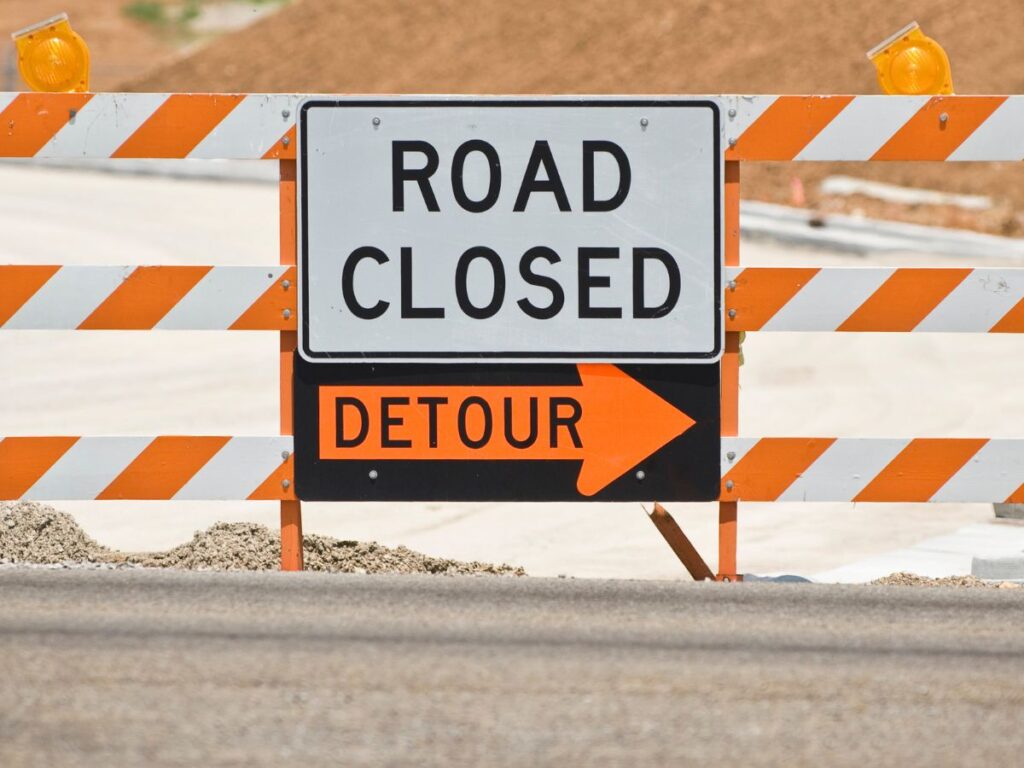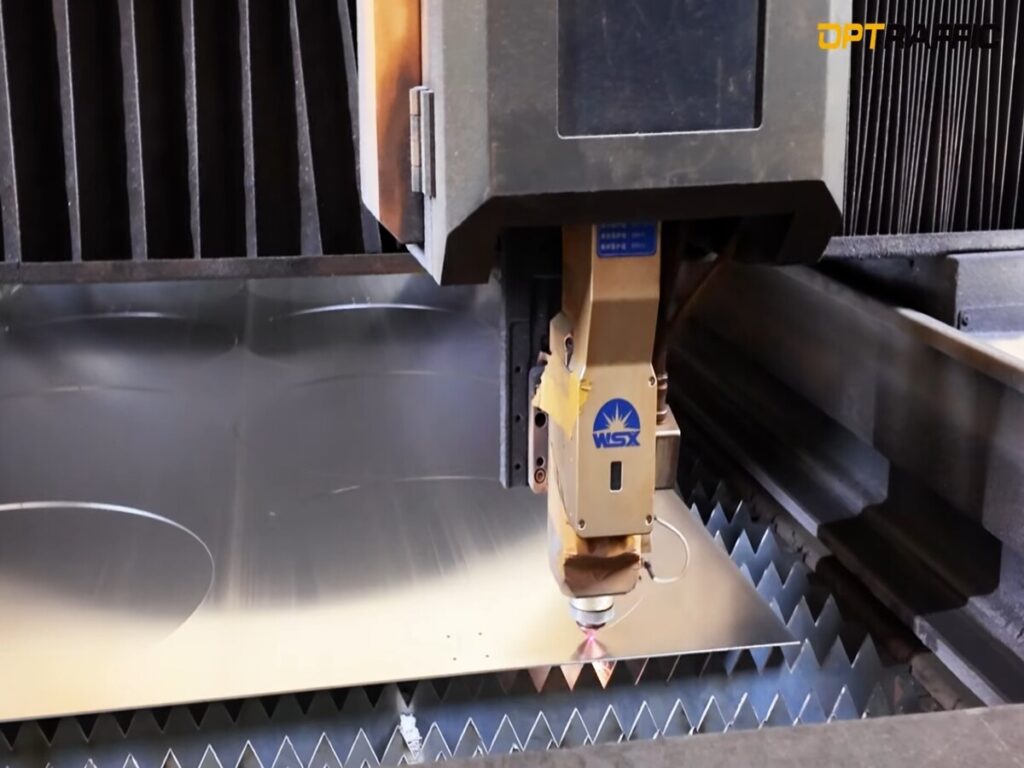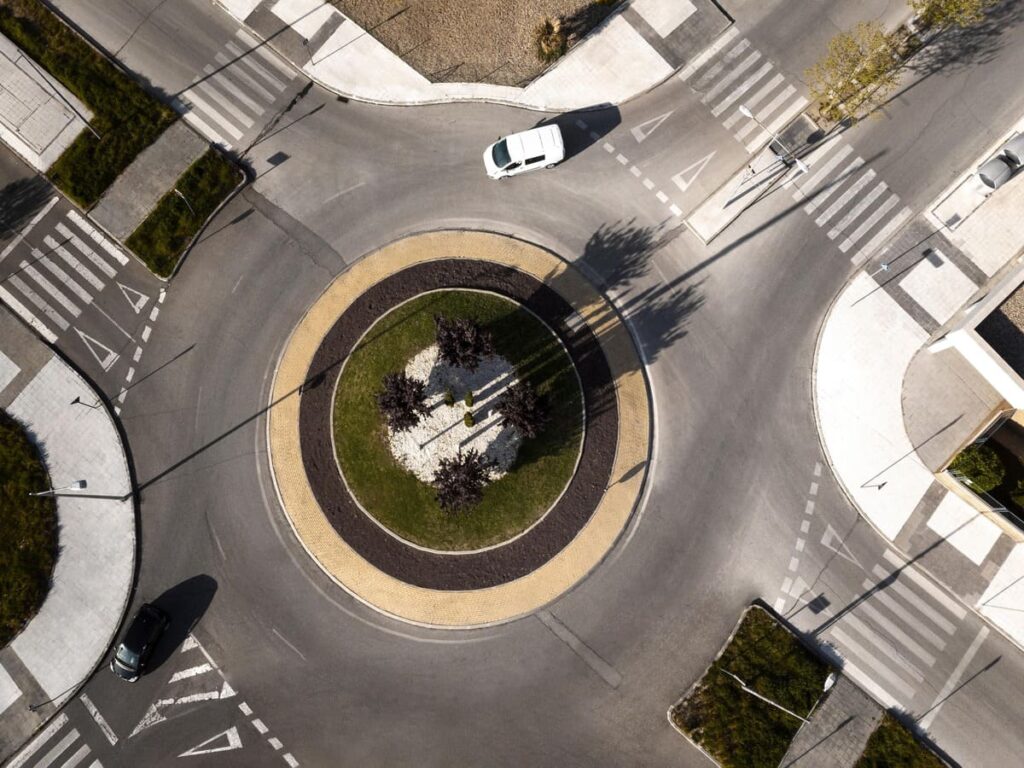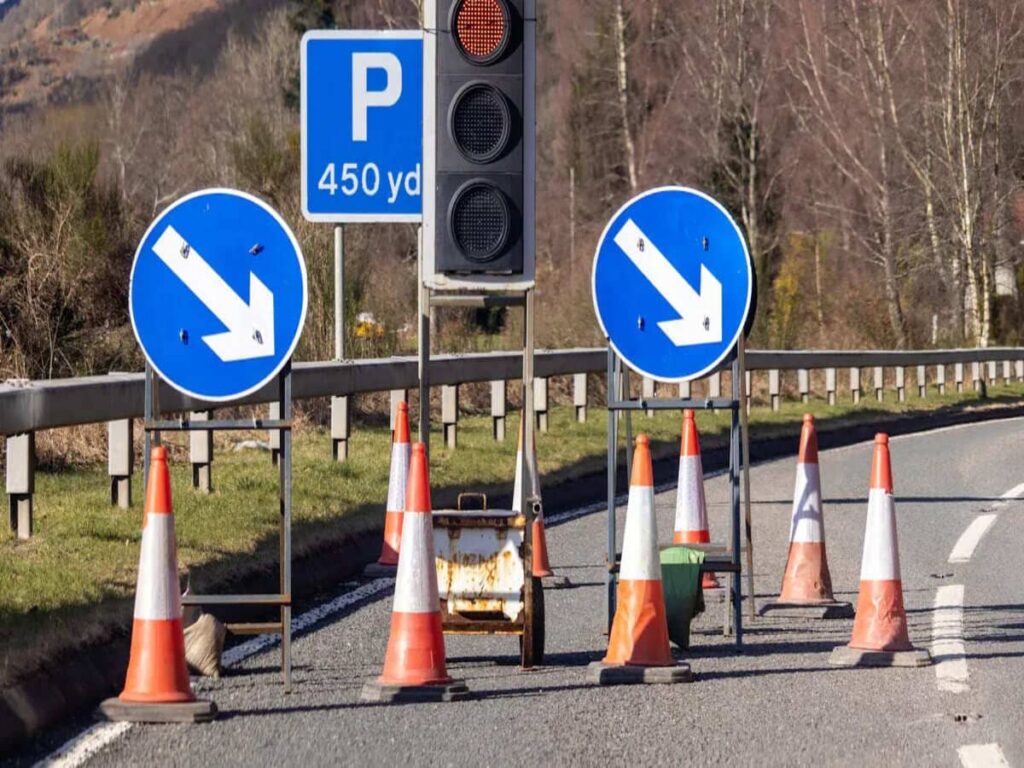
Tous les Canadiens panneau de signalisation doit être bilingue. Le Canada reconnaît l'anglais et le français comme des langues officielles, qui influence la langue utilisée sur les panneaux de circulation canadiens. Dans des emplacements gérés par le gouvernement fédéral tels que les aéroports ou les passages à bord, Les signes doivent être bilingues. Des provinces comme le Québec utilisent principalement le français sur leurs panneaux routiers, Alors que le Nouveau-Brunswick propose les deux langues sur sa signalisation. Dans certaines régions, Vous pourriez également rencontrer des langues autochtones locales sur les panneaux de trafic canadiens. Ces réglementations signifient que la langue affichée sur les panneaux de trafic varie en fonction de l'endroit où vous conduisez.
Panneaux de trafic canadiens: Règles fédérales et provinciales
Exigences bilingues fédérales
Certaines personnes pensent tout Panneaux de trafic canadiens sur les routes fédérales sont bilingues. Ce n'est pas vrai. Le gouvernement fédéral ne fait pas de règles strictes pour les panneaux bilingues sur chaque route fédérale. La loi officielle sur les langues et Loi sur les transports du Canada donner des conseils. Mais ils ne disent pas que chaque signe doit montrer l'anglais et le français. Des panneaux bilingues se trouvent principalement dans les aéroports, passages à bord, et bâtiments fédéraux. Ces lieux suivent des règles qui correspondent aux lois officielles du Canada.
En Nouvelle-Écosse, Vous pouvez voir des panneaux d'arrêt bilingues dans les zones acadiennes et francophones. Ces endroits incluent Halifax, Clare, et Argyle. Les gouvernements provinciaux et fédéraux soutiennent ces signes. Mais les communautés locales les ont généralement mis en place. Il n'y a pas de règle fédérale qui dit que chaque route fédérale a besoin de panneaux bilingues. La culture locale et ce dont les gens ont besoin décider où vont les signes bilingues.
Note: La façon du Canada d'utiliser les panneaux de circulation bilingue est comme les autres pays bilingues. Certains endroits, comme le Québec, veulent que le français soit plus important. Cela montre le respect des lois sur la culture et la langue. Autres endroits du monde, Comme le pays basque en Espagne ou près de la frontière américaine-mexicaine, Utilisez également plus d'une langue sur les panneaux pour les mêmes raisons.
Différences provinciales
Chaque province et territoire au Canada établit ses propres règles pour les panneaux de circulation. Certaines provinces utilisent principalement l'anglais sur leurs signes. D'autres utilisent l'anglais et le français. Par exemple, Le Nouveau Brunswick est officiellement bilingue. Presque tous les signes de trafic ont les deux langues. Au Québec, Le français est le plus utilisé sur les signes publics. C'est à cause des lois linguistiques de la province.
Nunavut est différent car il utilise de nombreuses langues sur ses signes. Voici une table qui montre comment les provinces et les territoires utilisent la langue sur leurs panneaux de trafic:
| Province / territoire | Langue de signalisation(s) | Remarques |
|---|---|---|
| Nunavut | Quatre langues dont InuktiTUT | Connu pour les signes en quatre langues reflétant les langues officielles |
| Québec | Anglais, Français, Espagnol, portugais | Panneau de frontière bilingue avec plus de bienvenue en espagnol et en portugais |
| Territoires du Nord-Ouest | Officiellement 11 Langues autochtones (Le signe est unilingue) | Signe lumineux et coloré mais seulement dans une langue |
| Nouveau-Brunswick | Anglais et français | Province officielle bilingue |
Nunavut utilise quatre langues sur ses signes, y compris inuktitut. Cela montre le respect des langues autochtones et des personnes qui y vivent. Les Territoires du Nord-Ouest ont 11 Langues autochtones. Mais de nombreux signes sont toujours dans une seule langue. Ces différences montrent que les panneaux de trafic canadiens changent pour répondre aux besoins et aux cultures locales.
Lorsque vous voyagez au Canada, Vous verrez que les panneaux de route peuvent être très différents dans chaque province. Certains endroits utilisent des photos sur les panneaux. Cela aide tout le monde à comprendre, même s'ils ne connaissent pas la langue. Les règles locales aident à garder les routes en sécurité et faciles à comprendre pour tous les conducteurs.
Signes bilingues au Québec et au Nouveau-Brunswick
Lois françaises du Québec
Lorsque vous conduisez au Québec, La plupart des panneaux routiers utilisent uniquement le français. Cela se produit à cause d'une loi appelée la Charte de la langue française, ou Bill 101. La loi a commencé dans 1977. Il dit que le français doit être la langue principale de tous les signes publics et commerciaux, y compris les panneaux de trafic. Le gouvernement veut garder la langue et la culture françaises fortes. Beaucoup de gens au Québec sont d'accord avec ces règles.
Le Office Québécois de la Langue Française vérifie si les panneaux suivent la loi. Ils n'agissent que si quelqu'un se plaint d'un signe. Si un signe enfreint les règles, Le bureau dit au propriétaire de le réparer. Ils donnent le temps de résoudre le problème avant de donner des amendes.
Il y a quelques exceptions à la règle. Par exemple:
- Signes non commerciaux, comme ceux des églises ou des événements culturels, Je n'ai pas à suivre la règle française uniquement.
- Depuis 1993, Les panneaux peuvent utiliser plus d'une langue si le français est beaucoup plus grand que les autres. Les mots français doivent prendre deux fois plus d'espace que d'autres langues.
- Les nouvelles règles commenceront en juin 2025. Ces règles rendront les choses encore plus claires, Surtout pour les signes numériques.
Les règles du Québec concernant les panneaux de signalisation sur la route montrent combien la langue compte là-bas. Les gens croient que ces lois aident à protéger leur langue.
La politique bilingue du Nouveau-Brunswick
Le Nouveau-Brunswick est la seule province au Canada qui soit officiellement bilingue. La loi indique que tous les panneaux routiers et de circulation doivent utiliser l'anglais et le français. Cette règle aide à servir l'anglais et les francophones également.
Vous verrez des panneaux bilingues sur les autoroutes, ponts, Et dans les villes du Nouveau-Brunswick. La province utilise les deux langues et les symboles clairs pour que tout le monde puisse comprendre. Les gens du Nouveau-Brunswick soutiennent les signes bilingues. Cela montre qu'ils respectent les deux langues officielles.
Au Nouveau-Brunswick, Vous pouvez aller n'importe où et voir des panneaux en anglais et en français. Cela aide tout le monde à trouver son chemin en toute sécurité.
Où les signes bilingues sont nécessaires
Zones bilingues désignées
Tu peux voir signes bilingues Dans de nombreux endroits importants au Canada. Certains endroits ont des règles qui disent que les panneaux doivent utiliser l'anglais et le français. Voici quelques exemples de l'endroit où vous trouverez des signes bilingues:
- Le gouvernement du Canada et le Nouveau-Brunswick ont besoin de tous les signes officiels pour être bilingue.
- En Ontario et au Manitoba, Certaines zones avec de nombreux français utilisent des panneaux bilingues. Ceux-ci sont appelés zones désignées en français.
- Ottawa, la capitale, a une règle qui dit que tous les panneaux de la ville doivent être bilingues.
- Nouvelle-Écosse, en particulier l'île du Cap-Breton, utilise des panneaux de nom de lieu en anglais et en gaélique écossais.
- Dans certaines parties de la Colombie-Britannique, Vous pourriez voir des signes en anglais et des langues autochtones comme Squamish.
Ces endroits utilisent des signes bilingues afin que tout le monde puisse comprendre les instructions et les avertissements. Cela aide à protéger les routes, surtout où les gens parlent différentes langues. Vous pouvez également voir des panneaux d'avertissement bilingues dans les zones touristiques ou à proximité des bâtiments du gouvernement.
Conseil: Surveillez les pictogrammes sur les signes. Ces images aident les conducteurs qui ne parlent pas anglais ou français comprennent rapidement les messages.
Règlements municipaux et locaux
Les gouvernements locaux peuvent établir leurs propres règles sur les signes bilingues. Ottawa est spécial car il a une règle qui dit que tous les panneaux de la ville doivent être en anglais et en français. Cette règle fait partie de la loi de la province et montre que la ville veut aider les deux groupes linguistiques. Toronto n'a pas de règle pour les signes bilingues, Même s'il s'agit d'une zone de service français. Sans règle locale, Toronto n'a pas besoin de signes bilingues.
Certaines villes du Québec peuvent utiliser des signes bilingues si le français est la langue principale. Par exemple, Les panneaux de stationnement dans certaines villes peuvent avoir l'anglais, Mais le français doit être plus facile à voir. Les gouvernements locaux utilisent parfois des images ou des symboles au lieu de mots pour indiquer clairement les signes pour tout le monde. Ces choix aident à garder les routes en sécurité et à s'assurer que tous les conducteurs connaissent les règles.
Exceptions et cas spéciaux
Signes non bilingues
Tous les panneaux de trafic au Canada n'utilisent pas l'anglais et le français. Dans certains endroits, Les panneaux utilisent une seule langue. Le Québec est différent parce que la loi dit que le français doit être la langue principale. Presque tous les signes du Québec ne sont qu'en français. Cette règle aide à garder la langue et la culture françaises fortes.
Voici quelques fois où vous verrez des signes unifangulaires au Québec:
- La plupart des panneaux de trafic public ne sont qu'en français.
- Les panneaux d'affichage publicitaires à proximité des autoroutes doivent être en français à moins qu'ils soient sur le terrain d'une entreprise.
- Les publicités sur les bus et les arrêts de bus doivent être en français.
- Les panneaux sur les véhicules pour déplacer des personnes ou des marchandises peuvent être bilingues, Mais le français doit être tout aussi facile à voir.
- Les événements pour les visiteurs internationaux peuvent avoir des signes bilingues, Mais le français doit être plus grand.
- Les événements spéciaux pour un petit groupe peuvent utiliser une autre langue pendant l'événement.
- Les appareils dans les lieux publics peuvent montrer des panneaux bilingues, Mais le français doit être la langue principale.
- Les noms d'entreprise de l'extérieur du Québec peuvent être dans une autre langue, Mais le français doit également être clair sur le signe.
Vous verrez également des panneaux unique dans les zones de pays d'autres provinces. Ces endroits ne peuvent utiliser que l'anglais parce que la plupart des gens parlent anglais.
Conseil: Regardez toujours les symboles et les images sur les signes. Ils vous aident à comprendre le signe, Même si vous ne connaissez pas la langue.
Tendances futures
Les panneaux de circulation canadiens changeront à mesure que la technologie se développera et que les communautés deviennent plus mitigées. Les panneaux numériques commencent à apparaître dans les villes et sur les autoroutes. Ces signes peuvent changer de langue et afficher rapidement des messages importants.
| Aspect | Canada | Autres exemples |
|---|---|---|
| Utilisation de la langue sur les signes | Signes bilingues (Anglais et français) dans certaines régions | L'UE utilise deux langues plus symboles; Le Japon utilise la langue maternelle, Anglais, et icônes |
| Utilisation des symboles | Texte et symboles aider tout le monde à comprendre | Les symboles sont communs dans le monde entier |
| Impact sur la sécurité | Les signes bilingues améliorent l'inclusivité et la sécurité | Résultats similaires en Europe et en Asie |
| Mandat juridique | Aucune loi stricte pour les signes numériques bilingues | Les règles diffèrent dans d'autres pays |
Vous pouvez également voir plus de signes dans les langues autochtones, Surtout au Nunavut et à la Colombie-Britannique. Les panneaux numériques facilitent l'ajouter de nouvelles langues et la mise à jour des messages. Cela aide tout le monde à se sentir inclus et assure la sécurité des routes pour tous les conducteurs.
Vous verrez que tous les panneaux de circulation canadiens ne sont pas bilingues. Les règles sont différentes à chaque endroit où vous conduisez. Zones fédérales, Québec, Nouveau-Brunswick, Et certaines villes ont leurs propres règles linguistiques. Les panneaux bilingues aident les gens à trouver leur chemin et à garder les routes en sécurité. Il est intelligent de vérifier les règles de panneaux locaux avant de voyager. Cela vous aide à rester en sécurité et à ne pas être confus.
Des études montrent que les signes clairs et bilingues aident les conducteurs à mieux comprendre. Les images et les mots supplémentaires vous aident à savoir quoi faire, Même dans de nouveaux endroits.
- Gardez ces choses à l'esprit:
- Les règles fédérales et provinciales ne sont pas les mêmes.
- Le Québec utilise principalement le français.
- Le Nouveau Brunswick utilise les deux langues.
- Les villes peuvent faire leurs propres règles de signe.
- Les signes à l'avenir pourraient utiliser plus de langues et d'écrans numériques.
FAQ
Toutes les provinces canadiennes nécessitent-elles des panneaux de circulation bilingues?
Toutes les provinces n'ont pas de signes bilingues. Le Québec utilise le français sur ses signes. Le Nouveau Brunswick utilise l'anglais et le français. La plupart des autres provinces utilisent l'anglais. Certains endroits de ces provinces ont les deux langues.
Où pouvez-vous trouver des panneaux de signalisation dans les langues autochtones?
Les signes dans les langues autochtones sont au Nunavut et dans certaines parties de la Colombie-Britannique. Ces signes montrent le respect des cultures locales. Ils aident également à rendre les routes plus sûres pour tout le monde.
Conseil: Surveillez les images et les symboles sur ces signes. Ils vous aident à comprendre ce que le signe signifie rapidement.
Pourquoi le Québec utilise-t-il principalement le français sur les panneaux de trafic?
Le Québec utilise le français en raison d'une loi spéciale. La loi est appelée la charte de la langue française. Il aide à protéger la langue et la culture françaises. Presque tous les signes publics du Québec sont en français.
Les signes bilingues sont-ils plus courants dans les villes ou les zones rurales?
Vous verrez plus de signes bilingues dans des villes comme Ottawa et Montréal. Les zones rurales n'utilisent généralement qu'une seule langue. C'est soit anglais ou français, selon où vous êtes.
| Type de zone | Langue sur les signes |
|---|---|
| Ville | Bilingue |
| Rural | Langue unique |
Serez-vous des signes bilingues numériques ou électroniques au Canada?
Vous pourriez voir des panneaux numériques dans les grandes villes et sur les autoroutes. Ces signes peuvent changer les langues et afficher rapidement les messages. Les panneaux numériques aident à garder les routes en sécurité et faciles à comprendre.

















